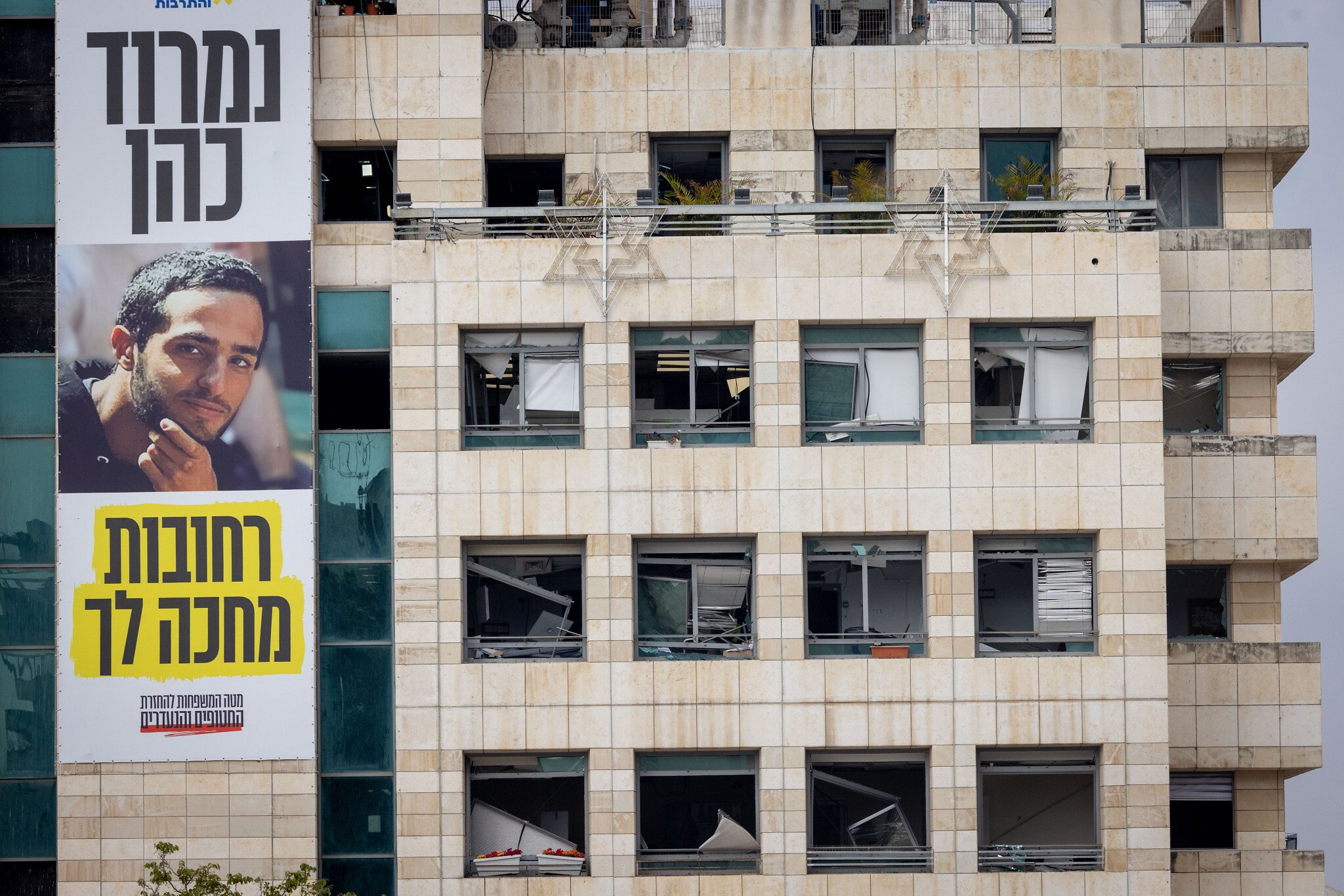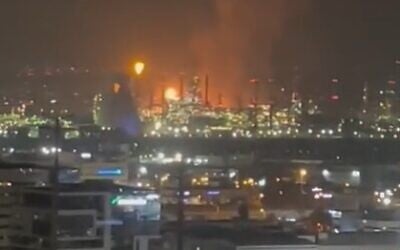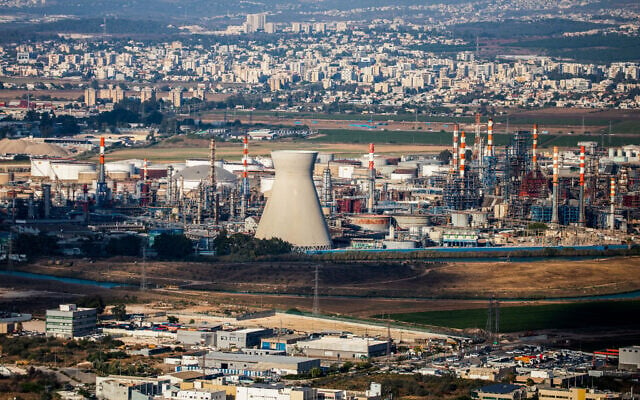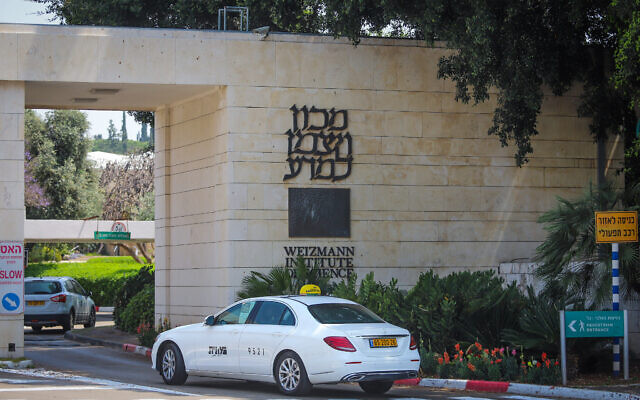



Missile barrages fired from Iran overnight caused damage to a major oil refinery in Haifa and to the campus of the Weizmann Institute of Science in Rehovot.
There were no reports of casualties in either strike, which came as Tehran fired separate volleys of dozens of ballistic missiles late Saturday and early Sunday in response to military action Israel has launched against Iran’s nuclear program.
The Bazan oil refinery, long a target of Israel’s enemies, suffered damage to pipelines and transmission lines running between facilities at the large Haifa complex, the company said in a filing to the Tel Aviv Stock Exchange.
“As of now, refining facilities are continuing to operate, though other facilities in the complex have been shut down,” the company said.
It added that it was examining the impact of the missile strike on its operations at the country’s largest refinery, as well as possible financial consequences. It was unclear when the affected facilities might come back online or what the impact might be.
In the wake of the announcement, Bazan shares dropped 2.8 percent on the Tel Aviv Stock Exchange.
A video shared on social media following the attack appeared to show two large fires burning at the industrial site.
The facility, home to a distinctive cooling tower that looms over the densely populated Haifa Bay, has for years been threatened with attack by Israel’s adversaries, including Iranian proxy Hezbollah. It has never been known to have suffered a direct hit in the past.
In October, Hezbollah published a video purporting to show one of its drones flying over the refinery site and other sensitive installations in the area.
Residents, environmental activists and others have long lobbied for the Bazan facility to be shuttered and moved elsewhere, both due to the heavy pollution it brings to the area and fears of disastrous consequences should it be struck.
The company’s statement made no mention of a possible environmental impact on Haifa residents.
In 2022, the government voted to relocate the facility by 2030. Work on the removal of an array of large oil tanks adjacent to the site was set to begin this year.
Elad Hochman, of the Green Course environmentalist lobby group, called the facility a “disaster waiting to explode … in the heart of a metropolis where there are hundreds of thousands of people, close to their homes, hospitals, and education sites. It is a strategic site in every way…therefore it must be moved immediately.”
In Rehovot, the Weizmann Institute said Sunday that some buildings on its campus had suffered damage after being hit by a missile attack.
Video and other footage shared with The Times of Israel, on condition that it not be published, showed extensive damage to one building on the university grounds, with a fire continuing to burn hours after the attack.
One of the damaged buildings was said to contain labs, The New York Times reported.
According to the university, there were no injuries from the strike on its campus, which came at around 3 a.m..
“The institute is in contact with relevant security and emergency authorities, and is taking every step necessary to ensure the well-being of its workers and the campus,” the school said. Israel banned educational activities and other types of gatherings on Friday morning as a precaution, as it began striking Iran.
Weizmann, home to a 280-acre campus in the north of the leafy central Israeli city, is considered among the world’s foremost research institutions, with regular announcements of landmark studies in life sciences, astrophysics, and other fields.
At least 42 people elsewhere in Rehovot were wounded when a missile hit a residential area, destroying at least one apartment building, according to the Magen David Adom rescue service. One man was alive for hours under the rubble at the site of the strike until rescuers managed to extract him. First responders said that he was in good condition.
At the missile impact site, Golan Levy, a medic for the United Hatzalah rescue services, told the Walla news site that a one-and-a-half-year-old baby and his mother were among the injured.
“There were casualties with bleeding and fractures. Everyone was in a panic, screaming. The homes in the area — most are without bomb shelters as this is an old area — were damaged by the impact. Residents lay on the floor in front of the municipal market and waited for rescue. Some were rescued from a nearby bomb shelter,” he said.
Iran’s overnight attacks on Israel included a total of 70 ballistic missiles and dozens of drones, according to the Israel Defense Forces’s latest estimates.
During the attack aimed at Haifa, one projectile struck a home in the town of Tamra, killing a mother, her two daughters, and another woman; another struck Bat Yam, south of Tel Aviv, killing at least seven civilians. Hundreds have been wounded in the attacks.
Despite the widespread damage, which also included three killed in central Israel strikes early Saturday, the military says that Iran’s attacks are more limited than what the IDF had anticipated. The IDF had estimated far larger numbers of casualties and more significant damage.
Iran is still believed to possess thousands of ballistic missiles.





